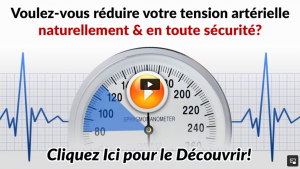The #1 Rated Blood Sugar Formula
High Blood Pressure and Atherosclerosis

What Are the Symptoms of Atherosclerosis?
In the early stages, you typically don’t have symptoms. Once coronary arteries start to seriously restrict blood flow to the heart, you may feel chest pain (angina) because not enough blood is reaching your heart, especially when you exert yourself or you feel angry or stressed.What Are the Complications of Atherosclerosis?
- Heart attack
- Stroke
- Peripheral arterial disease
- Erectile dysfunction
- Kidney disease
- Chest pain (angina)
- Pain in the legs (claudication)
What Is a Heart Attack?
A heart attack is a sudden loss of blood flow to the heart muscle. It usually happens when plaque deposits from atherosclerosis break open and cause a blood clot that clogs an already narrowed coronary artery and so limits or blocks blood flow. Without enough oxygen, part of the heart muscle is injured and sometimes permanently damaged.How Is Atherosclerosis Diagnosed?
Doctors often don’t diagnose atherosclerosis until a person complains of chest pain. At this point, the doctor may conduct tests to evaluate your risk for heart disease. These tests include:- Electrocardiogram (ECG): Sometimes called an EKG, it uses painless electrodes on your arms, legs, and chest to measure your heart’s rate, rhythm, and electrical activity. It may show if you've had a heart attack in the past or are having one now. It can also show any strain or thickening of the heart muscle.
- Exercise stress test: During this test, a medical team takes ECG and blood pressure readings as you exercise on a stationary bicycle or treadmill. The test has limitations because only serious narrowing of arteries typically shows up as abnormal on the test. So though the test is useful and means you likely don’t yet have serious atherosclerosis, you could still have growing plaque buildup in your arteries.
- Cardiac catheterization: Here, your doctor inserts a small flexible tube (catheter) into an artery, typically in the groin, arm, or neck and guides it through to the heart. They then inject dye in order to watch which way it flows. This helps your medical team find and measure any blockages in your heart. Sometimes they can even open up any blockages by expanding a small balloon to push plaque against the artery wall (angioplasty) or placing a tiny metal tube, or “stent,” to keep the blood vessel open.
- Echocardiogram: This test uses ultrasound waves to provide pictures of the heart's valves and chambers. It tells your doctor about chamber size, heart wall thickness, blood flow, and more. Because it’s so easy and noninvasive, the echocardiogram is often used as the first test after ECG to look for heart problems. It does have some limitations however. For example, it can’t directly detect blockages or plaque buildup in the coronary arteries.
- Carotid ultrasound: This test uses ultrasound waves to provide pictures of blood flow in the arteries of the neck. Because atherosclerosis affects arteries in general, detecting blockages in the neck arteries suggests that it is highly likely that blockages are present in other parts of the circulatory system (including the coronary arteries).
- Computed tomography (CT) scan: Here, a computer uses X-rays to make a cross-wise image of the heart. This can tell doctors the likely amount of calcium in coronary arteries, which is an indication of underlying atherosclerosis. Some more advanced CT scanners give more detailed pictures of coronary arteries.
- Magnetic resonance arteriography (MRA): This test uses a magnetic field and pulses of radio waves to create images of blood vessels and show where they may be blocked.
What Is the Treatment for Atherosclerosis?
Treating high blood pressure can offer dramatic protection against atherosclerosis. Much of the decline in the death rate from heart attacks and strokes is due to improved treatment of high blood pressure over the past 50 years.- 50% to 60% lower risk of dying from stroke
- 40% to 50% lower risk of death from a heart attack






